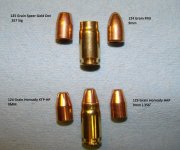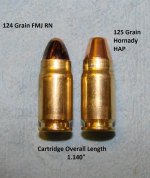We have discussed loading this cartridge here on the Forum on many occasions over the decades.
I have been shooting and hand loading the 357 SIG cartridge for more than a quarter century, so it all seams routine now a days
I used to go through about 6000 rounds of 357 SIG annually, it has slowed do considerably in recent years. However, I always have many hundreds of pieces of brass waiting to be cleaned and loaded
Back in 1993, I loaded on steel dies and was lubricating the cases. After all steel dies were all that existed at the time
A few years later Dillion came out with their carbide dies and I bought them, I foolishly thought they would work as well a straight carbide dies. They were hardly any better than the steel dies even though they cost 3 times as much money. Plus Dillion still recommended using case lube.
Then I began using a 40S&W dies to size the body and a 357SIG die to size the neck. This is where things really started working for me. I use a misting of Hornady One Shot lube in the brass bucket every few hundred rounds and all is well.
For roughly the past 20 years, I load 357 SIG in a five station progressive press
Station one is a 40S&W carbide sizer where depriming also occurs
Station two is a 357 SIG sizing die. Priming also occurs at this station
Station three flares the case mouth and drops the powder
Station four seats the projectile
Station five applies a collect crimp to the cartridge
By using the two sizing dies you let the carbide die do the majority of the work. The 357 SIG die is adjusted high enough to just resize the neck. Leaving the body alone
Do not forget to test that brass in your pistols before loading too many rounds. In some cases the 357 SIG die will need to be adjusted a tiny bit farther down in order to push the shoulder back. This is usualy an issue only if you have a tight chamber.
If you have more than one 357 SIG firearm obviously you set the sizing dies for you most troublesome chamber.
I use a Lee Factory Crimp die in that fifth and final stage. The FCD imparts a Collet crimp to the case. This allows the use a much wider range of projectiles over what neck tension alone holding the projectile in place can work with. I have loaded everything from 88 grain JHPs to 165 RN projectiles in this cartridge.
Once you get the dies adjusted and your rhythm going, 357 SIG is not that big a deal to load.



